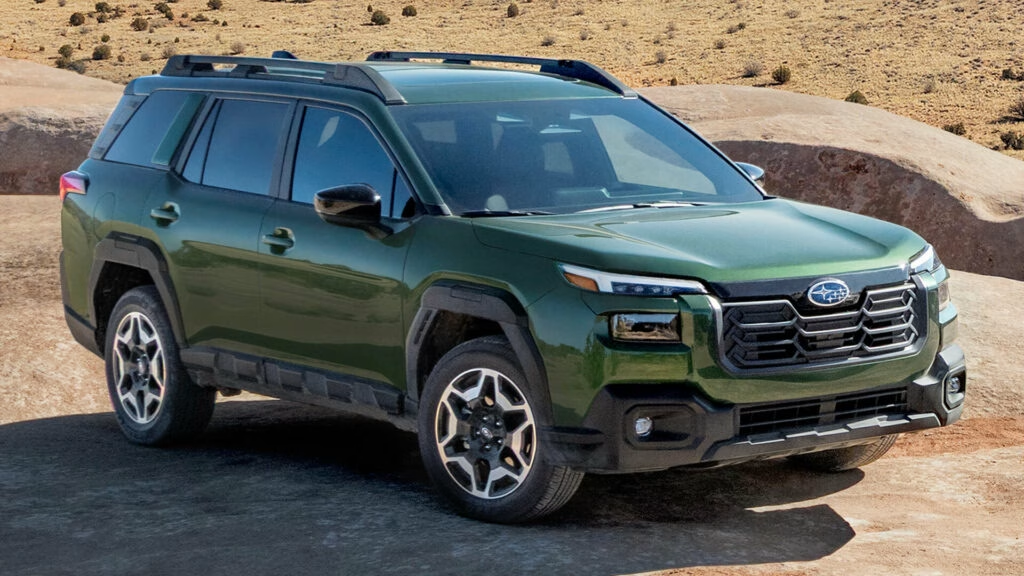How much does the 2026 Subaru Outback really cost, and what do you get for your money?
If you’ve been eyeing the Outback for its blend of ruggedness and everyday comfort, you’ll want to know what’s changed for 2026. Subaru has given its beloved wagon a full-on SUV makeover—think boxier stance, beefier cladding, and a price tag that’s, well, noticeably higher. Let’s break down what’s new, what you’re paying for, and whether the latest Outback still hits that sweet spot for adventurous families and road-trippers.
Why did the 2026 Outback’s price jump so much?
Sticker shock is real here. The base Outback Premium now starts at $34,995 before a $1,450 destination fee, making the true entry price $36,445. That’s a $5,000 leap from last year’s model. Subaru’s move positions the Outback right between the Forester and the larger Ascent, signaling a shift toward a more premium, SUV-like experience.
What do you get in the base Outback Premium?
Despite the price hike, the Premium trim comes well-equipped. Standard features include LED headlights, privacy glass, 18-inch alloy wheels, a power liftgate, and roof rails for your bikes or kayaks. Inside, you’ll find a 12.3-inch digital instrument cluster, a 12.1-inch touchscreen, a 10-way power driver’s seat, dual-zone climate control, and heated front seats with StarTex upholstery (a vegan-friendly, water-resistant material).
Safety tech is generous: adaptive cruise control with lane centering, blind-spot warning, rear cross-traffic alert, reverse automatic braking, and emergency steering all come standard. Subaru’s EyeSight suite continues to earn high marks from safety experts, and the 2025 Outback received a Top Safety Pick+ rating from the Insurance Institute for Highway Safety (IIHS)—a strong indicator the new model will follow suit.
How do the higher trims differ?
Step up to the Limited ($43,165 with destination), and you’re looking at perforated leather, heated rear seats, an eight-way power passenger seat, a Harman Kardon audio system, and a wireless phone charger. The Touring ($46,845) adds two-tone wheels, ventilated front seats, a 12-way power driver’s seat, and plush Nappa leather in Java Brown or Slate Black.
For those who crave more oomph, the Limited XT ($45,815) and Touring XT ($49,445) swap in a turbocharged 2.4-liter engine with 260 horsepower and 277 lb-ft of torque—enough to make highway merging a breeze, even with a full load. Both XT trims also feature 19-inch wheels, dual exhaust, and a surround view monitor for easier parking.
What about the Outback Wilderness—how is it different?
The Wilderness ($46,445) is Subaru’s answer to the off-road craze. It gets a lifted suspension for 9.5 inches of ground clearance, electronically controlled dampers, and a revised steering system. Unique bumpers, chunky cladding, and copper accents set it apart visually, while 17-inch matte black wheels wrapped in Bridgestone Dueler all-terrain tires mean business on rough trails.
Inside, you’ll find StarTex upholstery, heated seats, a wireless charger, and Wilderness-branded floor mats. Optional packages add a moonroof, surround view monitor, navigation, and even ventilated Nappa leather seats for those who want luxury with their mud.
How does the new Outback drive and perform?
The base engine is a 2.5-liter boxer four-cylinder with 180 horsepower and 178 lb-ft of torque, paired with a continuously variable transmission (CVT) and Subaru’s signature symmetrical all-wheel drive. While not a rocket, it’s more than adequate for daily driving and light adventuring. If you plan to tow or regularly tackle mountain passes, the turbo XT models are worth the extra investment.
Subaru’s focus on ride comfort and noise isolation is clear—acoustic windshields and improved sound deadening make highway cruising quieter than ever. The Wilderness trim, with its beefed-up suspension and all-terrain tires, sacrifices a bit of on-road refinement for genuine off-road capability.
Is the 2026 Outback worth the premium over the competition?
With the price increase, the Outback now competes head-to-head with midsize SUVs like the Honda Passport, Toyota Venza, and Hyundai Santa Fe. What sets it apart? Standard all-wheel drive, a reputation for reliability, and a cult following among outdoor enthusiasts. According to J.D. Power’s 2024 Vehicle Dependability Study, Subaru consistently ranks above average for long-term reliability, and resale values remain strong.
That said, the Outback’s new look is polarizing. Some love the rugged, plastic-clad vibe; others pine for the sleeker wagon of yesteryear. If you’re in the first camp, the 2026 model will feel like a natural evolution. If not, you might want to check out the Forester or even the Toyota RAV4 for a more understated approach.
When can you get one, and where are they built?
The 2026 Outback will hit dealerships later this year, with the Wilderness following in early 2026. All models are imported from Gunma, Japan—a nod to Subaru’s commitment to quality and consistency.
What’s the bottom line for buyers?
The big takeaway? The 2026 Subaru Outback isn’t about perfection—it’s about smarter adjustments. Subaru has doubled down on safety, tech, and rugged versatility, but you’ll pay more for the privilege. Start with one change this week—test drive the new Outback, or compare it side-by-side with a rival—and you’ll likely spot the difference by month’s end. Whether you’re a weekend warrior or just want peace of mind on icy commutes, the Outback’s blend of capability and comfort is hard to beat.

